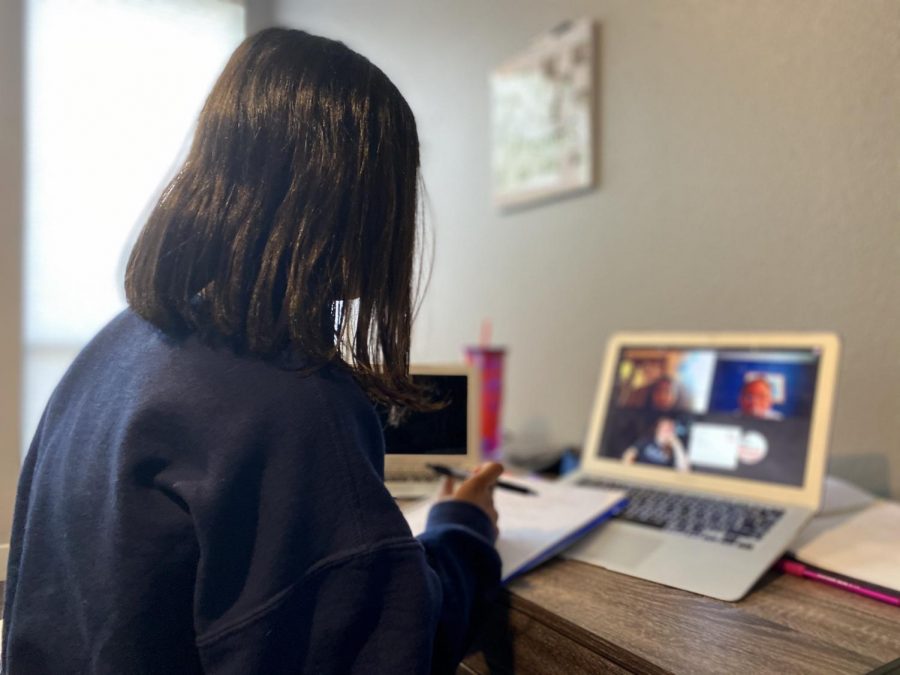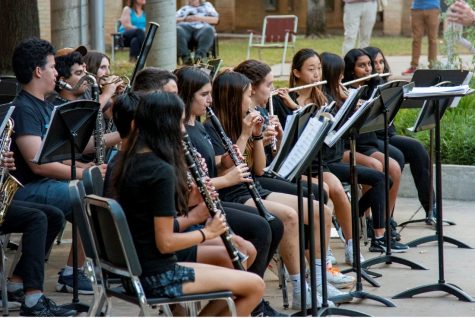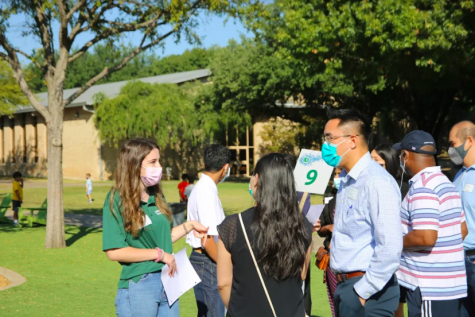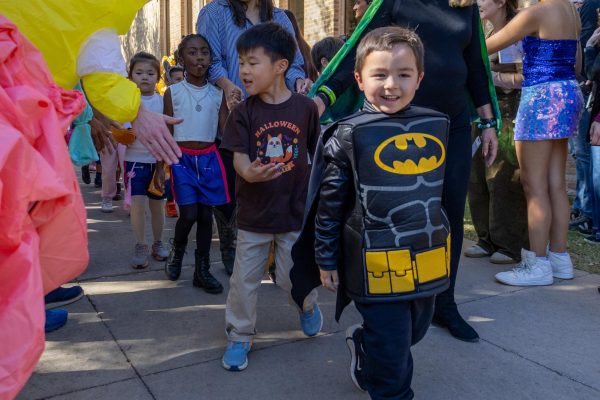Covid-19 Pandemic Spurs Remote Learning
For the last three days, Greenhill has been using a remote learning program, which was necessitated by the recent Covid-19 outbreak.
On March 12, school was suspended due to rising concerns about the viral pandemic. As written by Head of School Lee Hark, Greenhill students and teachers would not be returning to campus until April 6 at the earliest. On March 27, Hark then sent an e-mail to faculty and families extending the digital learning experience until April 10.
A New Form of Education
In response to the outbreak, students and faculty have had to take their education to the digital realm, utilizing applications such as Microsoft Teams and Canvas to continue their classroom-style learning.
Greenhill students have already become familiarized with Canvas; however, the quarantine has required students to engage with more assignments and activities on Canvas as a way to keep learning continuous.
“Teachers have been more active and consistent with posting on Canvas than ever before,” senior Veda Dhulipalla said. “Now, I am able to have assignments from all classes posted on Canvas and know exactly what I am supposed to complete for the next day thanks to our online platform.”
Alongside Canvas, Greenhill members have begun using a new program known as Microsoft Teams. This application is designed to allow students and teachers to host teleconferences for “synchronous” class days, or the days on the six-day rotation when a class is required to meet live.
Since only two to three classes meet live on Microsoft Teams every day, most of a student’s classes won’t meet every single day. To still encourage learning even on days when a class doesn’t meet synchronously, teachers assign homework via Canvas.
“I love how we are able to have more flexible free time to do essentially whatever we want,” junior Kaylee Chien said. “I can choose to do my outside work anytime as long as I can get it turned in on time, which is definitely the best part of online learning.”
Other students agree that online learning has created a higher level of self-accountability.
“I like how we are able to take responsibility for our participation in and out of our classes,” senior Sola Omonije said. “We are able to be relatively independent and academically productive while remaining in touch with our community during this crisis.”
Difficulties With Remote Learning
The change in learning style has required both teachers and students to change the ways that they interact with school, both inside and outside of the classroom. For Middle School and Upper School math teacher Melissa Battis, this change has been somewhat difficult.
“Instead of being able to interact, I feel the inability to have the back and forth banter and to call on people easily,” she said. “With only having four people’s faces on the screen, it makes it a lot harder to call on someone who I can’t see on the screen. I think about who I have called on and who I haven’t called on, and I feel like this obstacle is putting me back.”
The digitalization of learning, such as having a live class through Microsoft Teams, has made the classroom experience very different.
“I don’t like the slight awkwardness that the class has when we do video chats because we are online, and if more than one person talks at a time, it turns into chaos,” Chien said.
Another effect of the Covid-19 pandemic has been the change to Advanced Placement (AP) exams. On March 20, CollegeBoard released a statement saying that for the 2019-2020 exam administration only, students will take a 45-minute online free-response exam at home. The courses would also be shortened in a way that students should have finished all of the material by early March. These changes have impacted the way teachers and students have been preparing for the AP examinations, as educator-led development committees are still selecting the exam concepts that will be administered, according to CollegeBoard.
“It’s difficult with my AP class because the format of the exam is in limbo,” Upper School Spanish teacher Stephanie Almanza said. “Especially for the [AP Spanish Language and Culture Exam], we don’t know what will be on it. One of the tasks on this particular exam’s free-response in and of itself is already 55 minutes. So obviously, the exam is going to change quite a bit.”
Leveraging Digital Tools
With the rapid change Covid-19 posed upon instruction, teachers have learned significant digital skills to enhance their students’ learning experience.
“My AP Spanish class is very heavy on discussion,” Almanza said. “I created separate channels inside of Microsoft Teams, and as the creator of the channels, I can listen in on what they’re saying. It mimics walking around the classroom and hopping into discussions from time to time, and I found this technique helpful.”
Battis has also found novel approaches to engage her students.
“I have tried to do a mix of showing notes and giving time to take notes, but also doing something where every student is actively involved at the same time,” Battis said. “Kahoots have worked well and my classes have done a really nice job of using the chat tool to check in with each other on work that they were doing.”
A large difficulty for some students has been the concept of social distancing. Due to the orders by multiple counties to either stay at home or station in place, people haven’t been able to talk with their friends in person.
“The social aspect of school is what I miss most,” Omonije said. “I don’t like how we don’t get to see our friends every day, and it kind of sucks because there is some sort of magic in collaborating with people in real life.”
This change to digital learning has had a large effect on students and faculty, and with such a dynamically changing issue like Covid-19, this situation has caused a dramatic change in every facet of life, as seen through even the first three days of Greenhill’s new digital education platforms.






